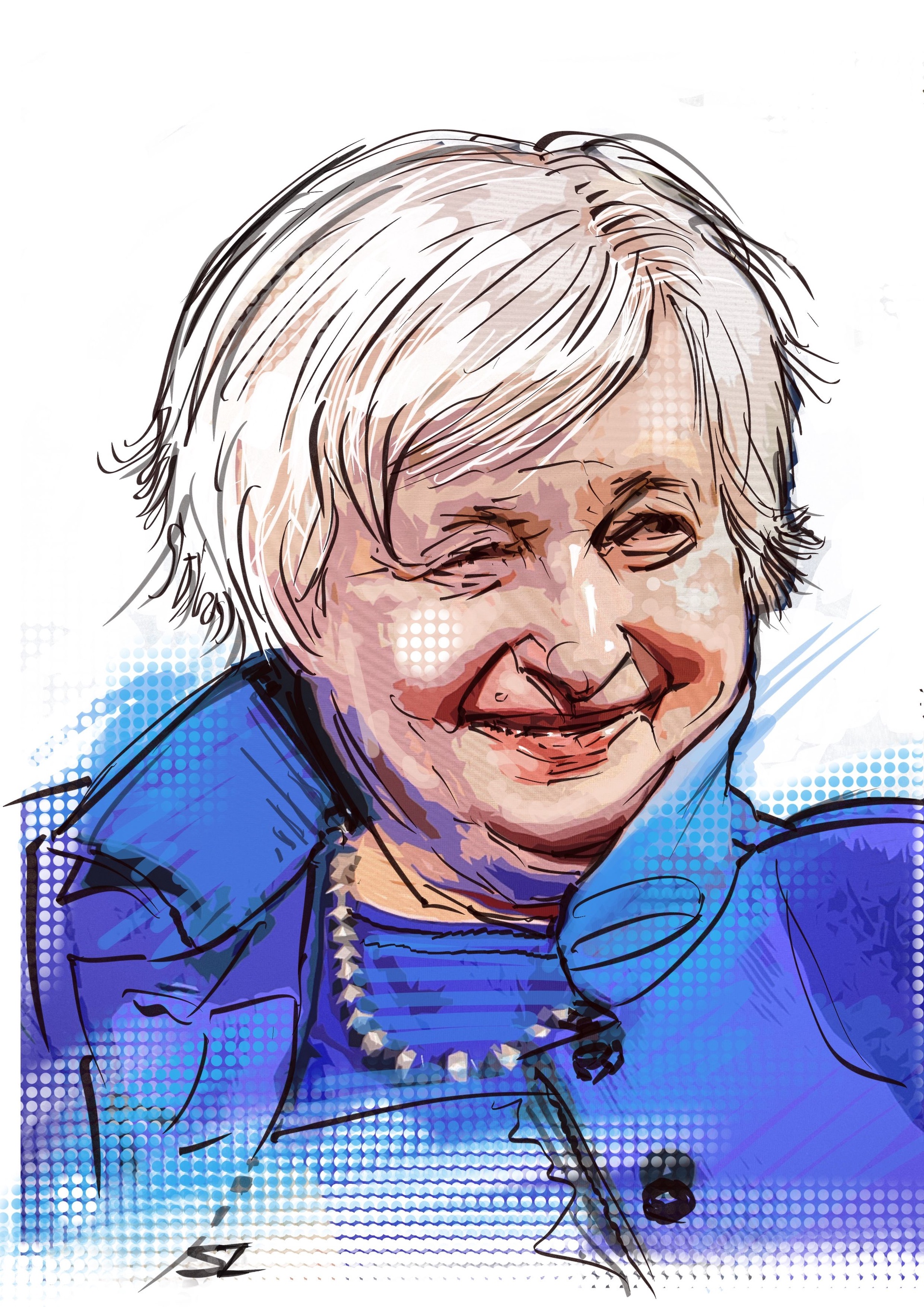
For those who lived through America’s frequent Japan-bashing episodes three to four decades ago, a recurring question in recent years is whether something similar is going on with China.
The latest sense of déjà vu emerged in Beijing on April 26 as United States secretary of state Antony Blinken wrapped up his latest visit to China aimed at building on a summit between President Joe Biden and Chinese President Xi Jinping that took place last November in California.
“China is the top supplier of machine tools, microelectronics, nitrocellulose – which are critical to making munitions and rocket propellants – and other dual-use items that Moscow is using to ramp up its defence industrial base,” Blinken told a news conference.
Although not entirely new, the allegations recall a not-too-dissimilar incident in 1987 when the Pentagon accused a unit of the Japanese industrial conglomerate Toshiba of selling machine tools to the Soviet Union to help make its submarines quieter and harder for American vessels to detect.
Toshiba eventually apologized for the sales, corporate heads rolled, and the company was penalized by the Japanese government.
But that wasn’t enough for some Japanophobic Republican members of Congress. In a widely-televised stunt on Capitol Hill, the irate politicians attacked Toshiba consumer products with sledgehammers, demanding a ban on imports from the Japanese company.
“Congress wants to reduce the choices available to American consumers and to increase the prices that we pay,” The Washington Post wrote at the time. “In the name of defending freedom, it encroaches on Americans’ market freedom.”
Although sanctions against Toshiba were eventually lifted, the incident raises the question of whether Washington is now resorting to similar tactics amid tensions with Beijing.
Overcapacity or higher efficiency?
In remarks to the American Chamber of Commerce in Guangzhou on April 5, visiting US Treasury secretary Janet Yellen voiced concern about “production capacity that significantly exceeds China’s domestic demand, as well as what the global market can bear”.
Echoing US gripes about Japanese exporters in the late 1980s and early 1990, she added: “Overcapacity can lead to large volumes of exports at depressed prices.”
Three days later in Beijing, the former US Federal Reserve board chairwoman noted that China “has long had excess savings” – another familiar American complaint about Japan in the late 20th century.
But whereas such savings used to be absorbed by Chinese investment in real estate and public infrastructure, Yellen said they were now being funnelled into new industries like electric vehicles (EVs), lithium-ion batteries and solar.
What she didn’t mention was excess Chinese savings being used to balance overconsumption in the US, playing a similar role to Japan’s excess savings in the past. To fund its current account deficits, US borrowing first came largely from Japan, then China.
Yet it seems Washington’s new mantra about overcapacity – shared by Brussels in the EV sector – might be flawed.
Ahead of Yellen’s visit, Bloomberg reported that China might have too much capacity in the battery and solar sectors, but its EV makers were “more efficient rather than laden with overcapacity”.
EV, solar ‘bogeyman’
A few weeks later, Bloomberg followed up with a commentary on the doldrums affecting the global wind industry over the last few years. “That appears to be ending – but don’t get your hopes up too much,” it cautioned. “If wind is recovering, credit goes to the nation that’s currently the bogeyman stalking the EV and solar sectors: China.”
Reports like these have been a godsend for Chinese officials, including foreign ministry spokesman Wang Wenbin, who himself cited Bloomberg in rebutting Washington’s overcapacity claims ahead of Blinken’s April 24 arrival in China.
“In the EV sector, the capacity usage rates of the majority of China’s leading auto exporters are considered normal,” Wang told a briefing in Beijing, while noting that China’s ratio of exports to output was “far lower” than in other car producers like Germany, Japan and Korea.
“The challenge facing the world is not overcapacity, but a severe shortage of capacity in the new energy sector,” he said, pointing to International Energy Agency forecasts for EV demand to more than quadruple from 2022 to 2030. “[Moreover,] the rapid growth of China’s new energy industry is determined by the laws of economics and market factors, not subsidies.
“China’s new energy products are competitive because we started out early and have kept investing in its R&D. Hence, a leading edge in technology.”
Kneecapping development
A day earlier, an unnamed official from the same ministry seemed to be blunter, reportedly accusing the US of trying to “kneecap China’s industrial development” to put itself in a better position.
Japanese officials at the then Ministry of International Trade and Industry, speaking in private, used to make similar assertions about US pressure.
In the auto sector, US-Japanese tensions eventually gave way to Japan’s carmakers investing billions of dollars in new plants in the United States.
In the current climate, this doesn’t seem to be a viable solution to US-Chinese frictions – the US Congress has just passed a bill requiring China’s ByteDance to divest from social media giant TikTok in the US within 12 months on national security grounds.
US over-anxiety

Yeo Han-koo, former South Korean trade minister
“The real issue at hand is not Chinese overcapacity, but rather Washington’s over-anxiety,” Chinese news agency Xinhua wrote in a commentary on April 28 , “that originates from its stubborn denial of the undeniable trend of the Global South’s increasing prominence in globalization.”
Such anxiety seems to extend to the current proposed acquisition by Japanese group Nissan Steel of Pennsylvania-based US Steel.
“Unfortunately, the election-year furore over the Nippon Steel deal may be a harbinger of misguided national security decision-making in Washington,” former South Korean trade minister Yeo Han-koo wrote in March.
Yeo, now a senior fellow at the Peterson Institute for International Economics in Washington, said that “the uproar over this proposed deal echoes the 1980s controversies when Japanese companies purchased the Rockefeller Center, Columbia Pictures and other American brands.”
Need for bilateral mechanism?
To sort out their differences, perhaps Washington and Beijing need a new bilateral mechanism similar to that of the Structural Impediments Initiative launched by the first Bush administration and the Japanese government in 1989, which, after multiple rounds of talks stretching late into the night, led to an agreement.
However, this agreement was subsequently complicated by the trade novices of the first Clinton administration who were like ducks out of water when they first came to Tokyo, compared with the hard-nosed negotiators of the Bush administration.
As the 1990s wore on – and the collapse of Japan’s bubble economy worsened – frictions simmered, but rarely got out of hand.
That is, except perhaps for one memorable incident in 1998 when US trade representative Charlene Barshefsky ordered Japanese reporters out of a press conference in the Malaysian city of Kuching, following a particularly acrimonious meeting of trade ministers from the Asia-Pacific Economic Cooperation forum in which the Japanese trade minister didn’t even bother to turn up for the final session.
Of course, the bursting of Japan’s financial bubble and the ensuing slump has brought comparisons with China’s ailing property sector. But the best assessment here is that probably the jury is still out. Moreover, Japan never experienced anything like the Covid pandemic on top of a financial collapse.
Same-same but different

Kwan Chi-hung, senior fellow, Nomura Institute of Capital Markets Research
Kwan Chi-hung, a Hong Kong economist who’s lived in Japan for four decades, writing in his paper Deep-rooted Causes Behind the China-US Friction – Similarities to and Differences from the Japan-US Friction, published more than three years ago, identified three factors common to US frictions with Japan and China: struggle for economic supremacy, competition between political-economic systems, and struggle for hegemony.
The first – characterized by savings and investment imbalances – are similar. Moreover, if China wants to reduce such tensions by investing abroad, the recipient countries are not likely to be the US but developing ones like Vietnam – just as Thailand became the magnet for Japanese investing in Southeast Asia in the late 1980s.
The second and third factors, according to Kwan, now a senior fellow with the Nomura Institute of Capital Markets Research, are where things start to diverge. In terms of political-economic systems, the American perception has been that Japan and China are both different from the US.
But “the view of Japan as different was limited to the economic sphere,” Kwan writes in the paper written for the Research Institute of Economy, Trade and Industry in Tokyo, “whereas the view of China as different extends to the realms of the political system and ideology.”
As for hegemony, both Japan and China have been perceived as threats. But again, he notes, “while the view of Japan as a threat was limited to the field of economy, the view of China as a threat has extended to the realms of ideology and national security.”
Worst-case scenario
Amid heightened tensions between Washington and Beijing, “the room for compromise between the two sides is small, so resolving their confrontation seems difficult,” Kwan wrote.
As for the potential for military conflict, “whether this worst-case scenario will be avoided through a peaceful resolution of the China-U.S. confrontation will be the test of the wis-dom of the new U.S. administration.”
Kwan wasn’t referring to the next administration but the current one. His paper, Deep-rooted Causes behind the China-U.S. Friction —Similarities to and Differences from the Japan-U.S. Friction, was published more than three years ago.









